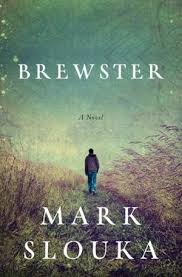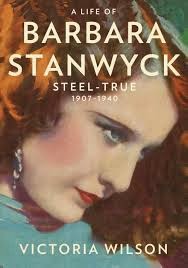At the end of the night that would change everything, the widow stood on her porch and watched as the young woman was marched down her front drive and shoved into the sedan.
The girl did not fight back, bound and tied as she was, nor did she cry out into the chill autumn rain, so surely the doctor and his attendants thought they had won. They did not know, as the car doors slammed shut, the engine came on, and the driver steered them down the muddy hill toward the road, that the widow and the girl in the backseat had just defied them right under their noses.
Description:
Here are my kind of first sentences: ones that grip immediately and demand you continue to read until the mysteries are solved. Who is the girl and why is she being dragged away by medical people "bound and tied"? Who is the widow and what is her role in defying these people? And what is the secret the widow and girl are protecting?
Rachel Simon in her new novel, The Story of Beautiful Girl, tells the story of Lynnie, John Doe #42, Martha, and their secret: a newborn baby who is given to a stranger (Martha) one stormy night. Lynnie, a developmentally disabled young woman, and #42, a deaf mute Black man (so named as no one knows his real name), have escaped from The Pennsylvania School for the Incurable and Feebleminded. They were long-term residents.
Lynnie has given birth during their escape. Now they need a place to rest, dry off, and hide. They select a house seemingly at random, knock on the door, and are hesitantly admitted entrance by Martha, a complete stranger and elderly widow who lives alone.
Martha, sensing their urgency, quickly gives them clothes, food, and a spot in the attic for the baby to be fed and warmed. The baby is white, so Martha feels the man is apparently not the father, but from his actions is clearly in love with both Lynnie and the infant.
Within minutes, the doctor from the School and his staff are at Martha's door. Lynnie is seized, placed in a straitjacket "for her own safety" and shoved into a car to returned to the institution, but #42 eludes their clutches and runs into the forest. Before Lynnie is dragged off, she whispers to the widow, "Hide her," the only words she has spoken in years. The baby remains in the attic after they leave, still a secret from the School doctor.
Martha has no idea who these people are, where they are from, their present and now their future which she has become involved. Martha must determine what to do that is best for the Lynnie, #42, the baby girl, and herself.
This unlikely, yet compelling relationship between Lynnie and #42, as well as Martha, slowly unfolds, revealing each one's past which led to the stormy night, as well as the events that occur to each in the days that follow. By allowing each chapter to be narrated by one character then another, author Simon carefully tells very personal tales of sympathetic individuals, institutional confinement, the kindness of strangers, disappointment, and the hope of love.
One cannot read The Story of Beautiful Girl without achieving a new awareness of a population hidden away behind stone walls, forgotten, but still possessing real thoughts, emotions, and dreams. Simon writes from personal experience. Her own sister, Beth, has an intellectual disability, and their relationship is documented in her earlier book, Riding the Bus with my Sister.
It is a stirring book and far from a mawkishly romantic, contrived story or even simply a brutal description of institutional life it could have been. This is a solid set of circumstances and characters that make readers question their own conceptions of others and what they might do should roles be reversed and we find ourselves confronting two silent, dripping, fearful people at our doorstep one stormy night when we are alone in our house .... and then, what should we do next.
Rachel Simon in her new novel, The Story of Beautiful Girl, tells the story of Lynnie, John Doe #42, Martha, and their secret: a newborn baby who is given to a stranger (Martha) one stormy night. Lynnie, a developmentally disabled young woman, and #42, a deaf mute Black man (so named as no one knows his real name), have escaped from The Pennsylvania School for the Incurable and Feebleminded. They were long-term residents.
Lynnie has given birth during their escape. Now they need a place to rest, dry off, and hide. They select a house seemingly at random, knock on the door, and are hesitantly admitted entrance by Martha, a complete stranger and elderly widow who lives alone.
Martha, sensing their urgency, quickly gives them clothes, food, and a spot in the attic for the baby to be fed and warmed. The baby is white, so Martha feels the man is apparently not the father, but from his actions is clearly in love with both Lynnie and the infant.
Within minutes, the doctor from the School and his staff are at Martha's door. Lynnie is seized, placed in a straitjacket "for her own safety" and shoved into a car to returned to the institution, but #42 eludes their clutches and runs into the forest. Before Lynnie is dragged off, she whispers to the widow, "Hide her," the only words she has spoken in years. The baby remains in the attic after they leave, still a secret from the School doctor.
Martha has no idea who these people are, where they are from, their present and now their future which she has become involved. Martha must determine what to do that is best for the Lynnie, #42, the baby girl, and herself.
This unlikely, yet compelling relationship between Lynnie and #42, as well as Martha, slowly unfolds, revealing each one's past which led to the stormy night, as well as the events that occur to each in the days that follow. By allowing each chapter to be narrated by one character then another, author Simon carefully tells very personal tales of sympathetic individuals, institutional confinement, the kindness of strangers, disappointment, and the hope of love.
One cannot read The Story of Beautiful Girl without achieving a new awareness of a population hidden away behind stone walls, forgotten, but still possessing real thoughts, emotions, and dreams. Simon writes from personal experience. Her own sister, Beth, has an intellectual disability, and their relationship is documented in her earlier book, Riding the Bus with my Sister.
It is a stirring book and far from a mawkishly romantic, contrived story or even simply a brutal description of institutional life it could have been. This is a solid set of circumstances and characters that make readers question their own conceptions of others and what they might do should roles be reversed and we find ourselves confronting two silent, dripping, fearful people at our doorstep one stormy night when we are alone in our house .... and then, what should we do next.
Happy reading.
Fred
Fred
www.firstsentencereader.blogspot.com
If this book interests you, be sure to check out:
Post a Comment
Previous posts____________________
If this book interests you, be sure to check out:
Stedman, M.L. Light Between Oceans
A young couple living on a lighthouse find a rowboat drift ashore on their isolated island. Inside are a dead man and a newborn baby. Sadly childless themselves, what should they do? (previously reviewed here)







